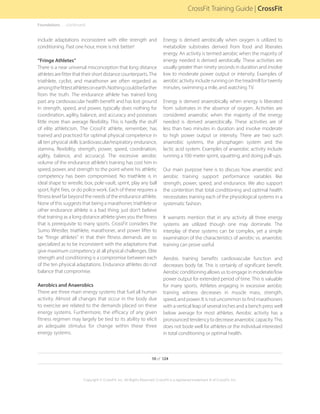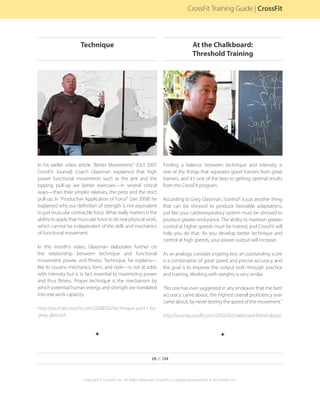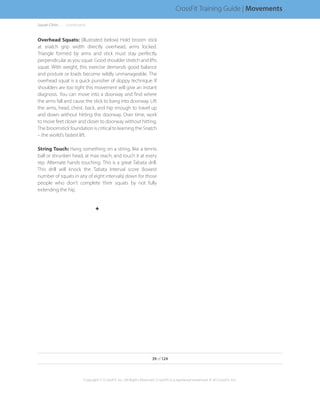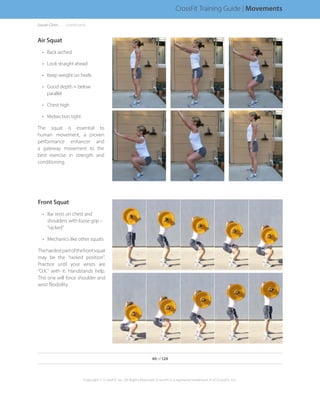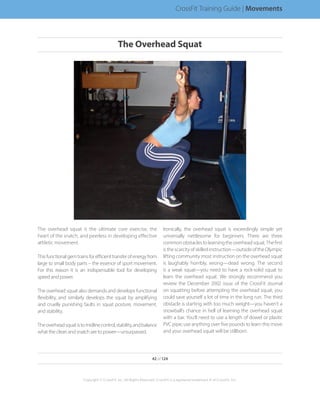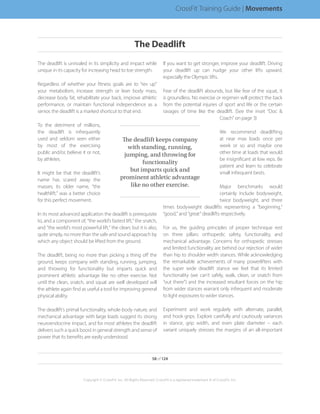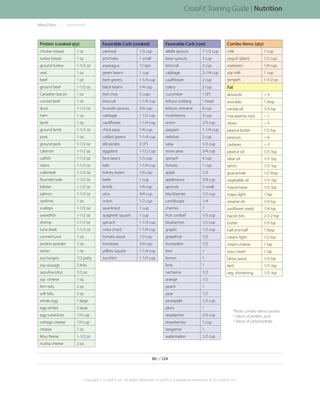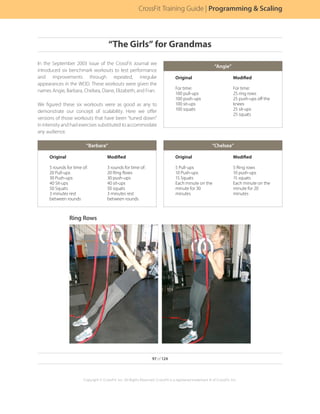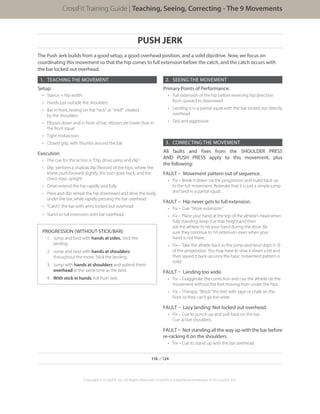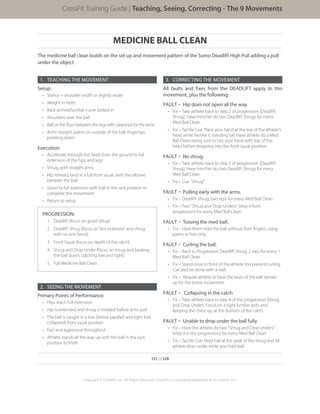The CrossFit Training Guide contains articles written over 10 years on the foundational movements and concepts of CrossFit methodology. It is designed to help users develop training knowledge and skills to pass the Level 1 Trainer course. The articles cover topics like understanding CrossFit, its aims of broad, general fitness, prescription of high-intensity functional movements, methodology of empirical evidence-based fitness, implementation as a sport, and adaptations of increased work capacity.









